Butterfly Chart Usage Instructions
Background
Butterfly chart, also known as tornado chart, is a special type of bar chart that can intuitively compare the differences between two sets of data.
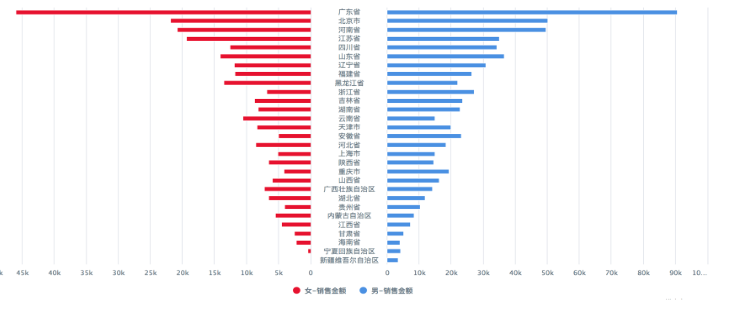
Usage Scenarios
Suitable for comparative analysis of two indicators of the same type at the same dimension, such as: comparison of consumption amounts between male and female members in different regions.
Usage Prerequisites
1. Create a new card, ensure the "Install Plugin" entry under visualization extension is visible. If not visible, you need to contact Guandata personnel to turn on the "Visualization Extension Plugin" switch.
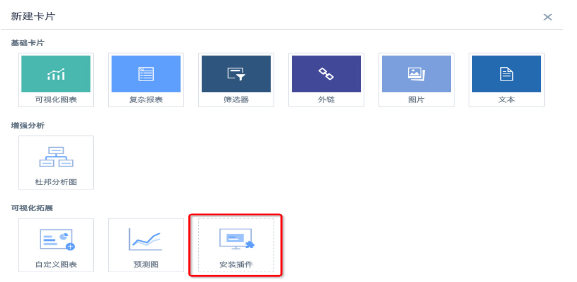
2. Click the nine-grid in the upper right corner of the page, go to "App Market" — Visualization Extension — Butterfly Chart, download the plugin, the plugin is in json format.
3. Administrator users enter the new card interface, click "Install Plugin", select the previously downloaded butterfly chart plugin, after installation is complete, all users can use this type of chart.
Operation Guide
1. Create a new card, select "Butterfly Chart" under visualization extension, select dataset.
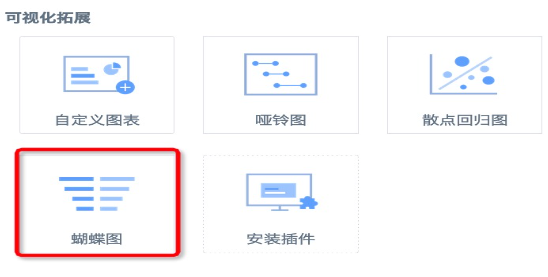
2. According to the page prompts, select 3 columns of data (1 dimension, 2 numerical values).
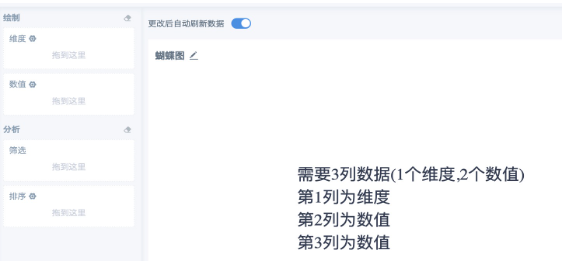
Note:
A. Generally recommended to use when indicator values are all non-negative values.
B. Butterfly charts are generally used to compare two sets of data at the same dimension. The two indicator fields used should mostly be the same field, so if the dataset itself doesn't split the indicators, you need to create new calculated fields to recalculate the two sets of data to be compared. For example, use if([Gender]='Male',[Retail Amount],0) to count consumption amounts by gender. You can also use year-over-year functions to compare data from two periods.
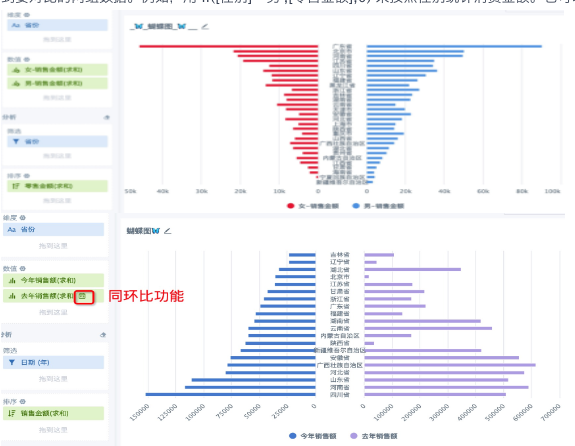
3. Put the indicator field used for statistics in the numerical column into the sorting column. For example, in the above figure, count the consumption amount of each province by gender, then you can sort by the total consumption amount of each gender, or not distinguish by gender, sort by the total consumption amount of each province; in the above figure, because the year is filtered, the sales amount is sorted by the total sales amount of each province in the selected year.